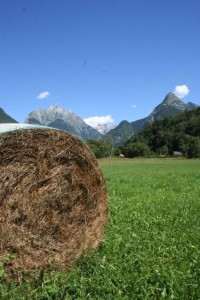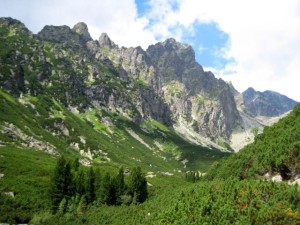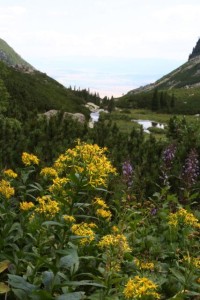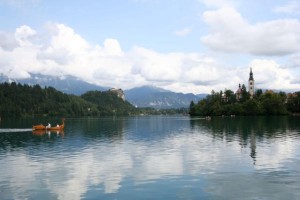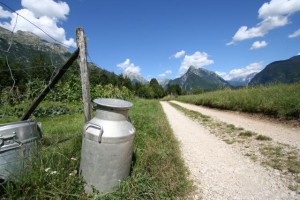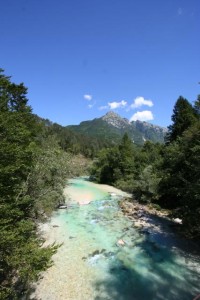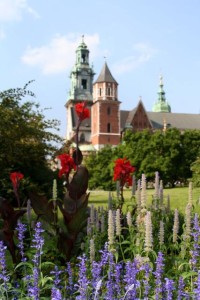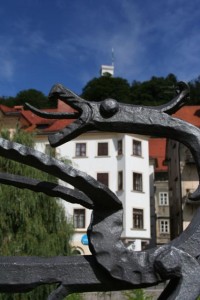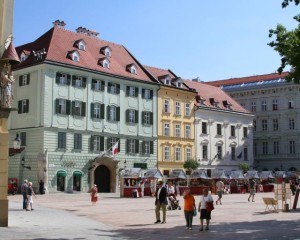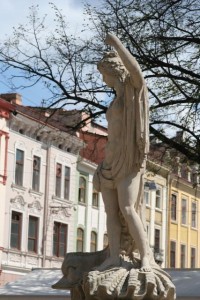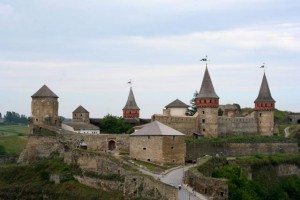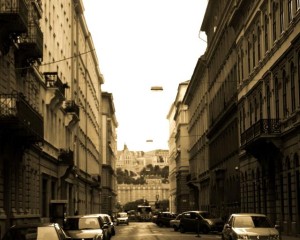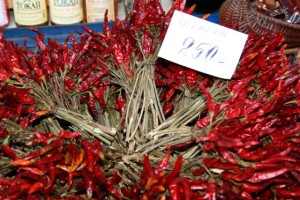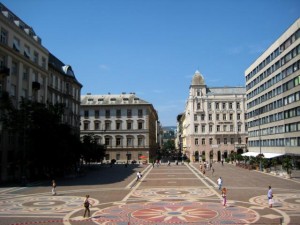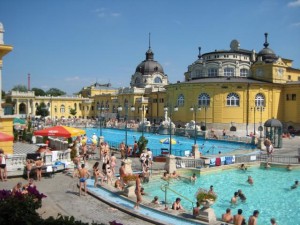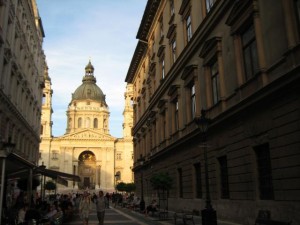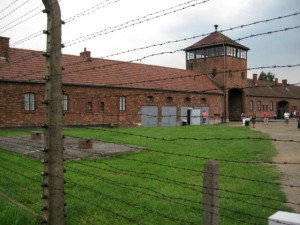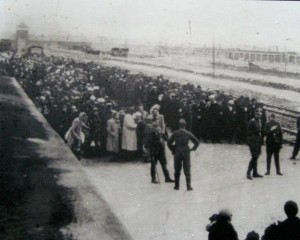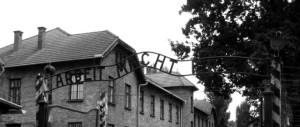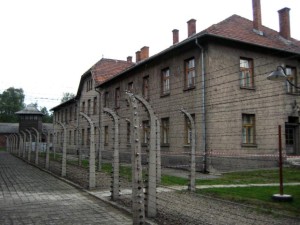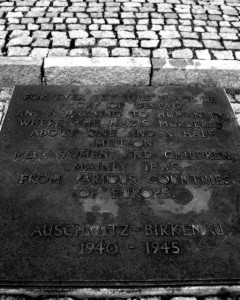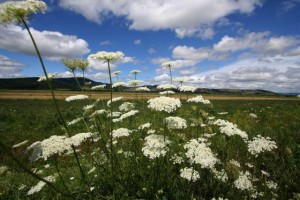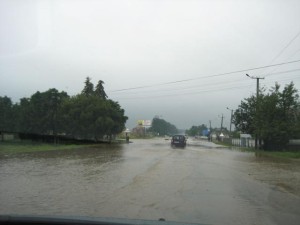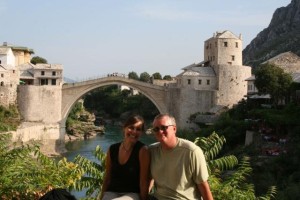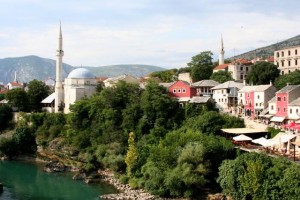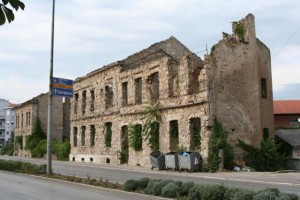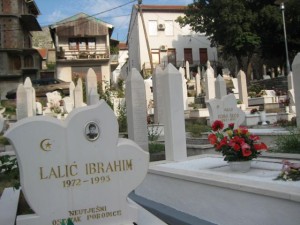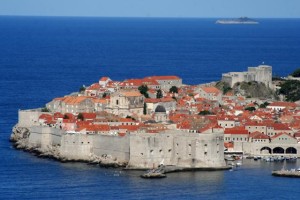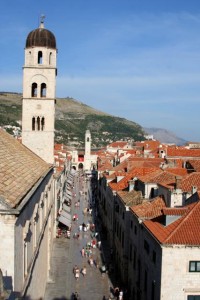Sat 30 Aug 2008
Who Needs Rome, Venice and Tuscany?
Posted by Derek under Italy
[3] Comments
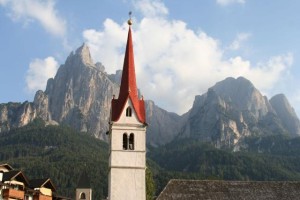
When we decided to spend a week or so in Italy before crossing into France, we were nervous about battling the onslaught of tourists that converge on Italy during August. Many Europeans take off the ENTIRE month of August and hit the road. We knew the big towns and regions would be swamped, so we dug deep into our guidebook trying to locate places that might be less overwhelmed. Once again, our Lonely Planet guidebook saved the day with all sorts of recommendations.

Our first stop was Bolzano, a relatively large city in the Northeast corner of Italy filled with perfectly preserved medieval buildings, cafe- filled squares and, happily, very few tourists. Bolzano is situated at the foot of a mountain range whose greyish peaks have earned it the nickname “the Dolomites” (meaning “pale mountains”). We used Bolzano as a base to drive around the picturesque area and quickly regretted that we hadn’t allocated more time to the Dolomites. The mountains and the surrounding valleys are as pretty as anything we’ve seen, and exploration of the small, Italian villages and the numerous hiking trails could have occupied several weeks.
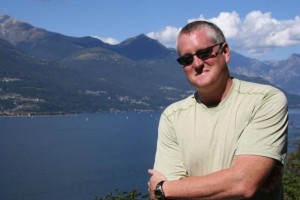
All too soon, it was time to leave Bolzano. We drove through the Swiss Alps, where we quickly visited the posh, but surprisingly commercial, ski town of St. Moritz, Switzerland (as well as countless less posh but incredibly more quaint and charming little hamlets that gave new meaning to the term “Alpine village”) before crossing back into Italy to Lake Como. I know what some of you are thinking, and yes, that’s where George Clooney has a villa. We were intrigued: if it’s good enough for George, surely it would be good enough for us, right? Right.

We found an amazing hotel on the side of a mountain in the northern part of the lake, with vistas that stretched for miles and an owner-chef that cooked up some of the best meals we’d had in a long time. We spent our days visiting small villages along the lake via car and ferry, including a short visit to Bellagio, the small lakeside town that is the inspiration of the Las Vegas casino that bears its name. And, of course, we searched for George. Passing through the small village where Clooney’s villa is located, we kept our eyes open for any signs of George, but our search was in vain. Being a member of the paparazzi is a tough job.
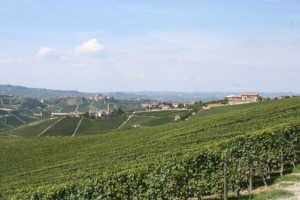
After leaving the lake region, we came upon one of our greatest finds of our trip – the Piedmont region of Italy. In the far western end of Northern Italy (just south of the Italian Alps where the 2006 Winter Olympics where held and north of the Italian Riviera), the region just started attracting a smattering of tourists a few years ago. In fact, when we met locals in the region, their first question was, “How did you find out about Piedmont?” These kind of questions are the true sign that you’ve found travel utopia.

Piedmont’s cities and roads were blissfully empty, so we were able to explore the area without hassle, driving over hills covered with vineyards and hazelnut trees, discovering ancient, unspoilt towns and witnessing the hazelnut harvest. Known worldwide as the mecca of Barolo wine and the absurdly expensive truffle, the region is also home to the Slow Food Movement, an international organization that promotes an attitude toward life that emphasizes spending more time enjoying the company of friends and families, starting in the dining room. From our dining experiences in Piedmont, we think the region’s people have that figured out.

On our last day in the area, our hotel owner organized a free, private cooking class with a chef who evidently owned an acclaimed restaurant in the area but retired a few years ago. Now, he has another small restaurant but only cooks when he feels like it. Luckily, he felt like cooking for us. After we spent a few hours with him learning the secrets of making gnocchi, tomato sauce and panna cotta, we returned later that evening for a dinner that lasted well over 3 hours and cost a pittance of what it would have cost back home. After multiple courses – 4 different types of antipasta (the course you eat “before” pasta), 3 different types of pasta, a fish course, a cheese course, lamb chops and 2 different desserts – we slowly ambled out of the restaurant promising that we would soon return to this undiscovered Italian region.
[embedplusvideo height=”350″ width=”450″ editlink=”http://bit.ly/1pAC4kB” standard=”http://www.youtube.com/v/yQ-n22p5bJM?fs=1″ vars=”ytid=yQ-n22p5bJM&width=450&height=350&start=&stop=&rs=w&hd=0&autoplay=0&react=1&chapters=¬es=” id=”ep4341″ /]
